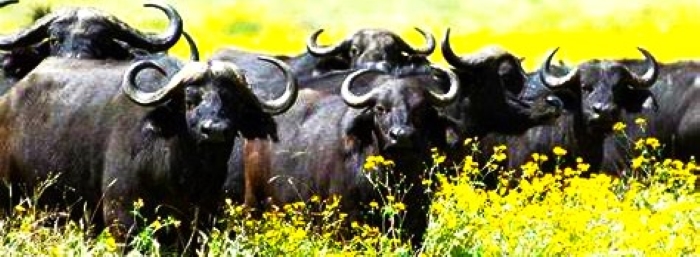Special Report
Tanzania is embarking on a new wildlife census this time specifically targeting the Southern Highlands ecosystem.
The Exercise was launched at Nyerere National Park in the first week of October 2024 and is expected to be completed sometime in November 2024.
As it happens the latest wildlife census is conducted within the Nyerere-Selous-Mikumi ecology, encompassing 104,143 square kilometers.
The Arusha-based Tanzania Wildlife Research Institute is undertaking the new exercise of counting and documenting the number of wild animals in the country’s southern precinct.
The Institute will also work in conjunction with other conservation entities such as the Tanzania National Parks, the Tanzania Wildlife Management Authority and the Tanzania Forestry Services
The Tanzania Times has learned that upon completion, the now ongoing wildlife census will have cost some 560 million/- in local currency, which should translate to around USD 225,000.
This is going to be the 17th Wildlife Census to be undertaken in the Selous-Mikumi ecology so far. Results from the count are likely to be tabled as early as January or February 2025.
The Word is snakes are not included in this latest census just as they have always been left out in previous studies
The Census covers among other areas, Tanzania’s biggest National Park, which is Nyerere NP and the country’s biggest Game Reserve, the Selous, from which the former was annexed in 2019.
Other conservancies to be mapped in the wildlife census include, Mikumi National Park and Game Reserves such as Lukwika-Lumesule and Liparamba as well as Wildlife Management Areas such as Chingolile, Iluma, Kusungule, Kimbanda, Mbarang’andu, Ngarambe-Tapika, Liwale and Nalika-Tunduru.
The Census will also cover all areas and buffer zones surrounding Forests, National Parks, Game Reserves and Wildlife Management Areas as well as animal corridors linking the conservancies.
Tanzania had earlier on released the previous national wildlife census which indicated that the country had the highest number of Buffaloes in Africa.

Apparently, most of the 225,000 buffaloes counted in the country were found to be grazing in the Southern Highlands.
Serengeti National Park, located in the Northern Region was found to have nearly 70,000 buffaloes, the biggest number when compared to other conservation areas.
The Nyerere-Selous ecosystem had a total of 66,546 buffaloes, while the Katavi-Rukwa range was found to host 35,273 buffaloes and the Ruaha-Rungwa wilderness holds 20,911 Nyatis.
Tanzania was found to have four-times the number of buffaloes compared to South Africa.
South Africa comes second on the continent with a total of 46,000 buffaloes, followed by Mozambique in the third position with 45,000 Nyatis, while Kenya currently hosts 42,000 buffaloes and Zambia 41,000.
Tanzania also leads in Africa as far as the number of leopards is concerned, with the country hosting a total of 24,000 such ferocious cats.
The country also has a total of 17,000 lions, which is the highest figure on the continent and almost six-times the population of Leos in South Africa, which ranks second on the continent with just 3,284 such cats.
As for the elephants, Tanzania is home to 60,000 jumbos, ranking third after Botswana, which has 130,000 elephants and Zimbabwe with 100,000 Jumbos.
The number of wildebeests in the country has also increased, reaching 1,597,850 Gnus which indicates an increase of 1326 wildebeests, when compared to the previous census of 2015.
When it comes to the endangered Rhinos, Tanzania takes the fifth position in Africa for having a total of 212 horned mammals, falling behind Namibia which leads on the continent with 2196 rhinoceroses.



Comments are closed, but trackbacks and pingbacks are open.